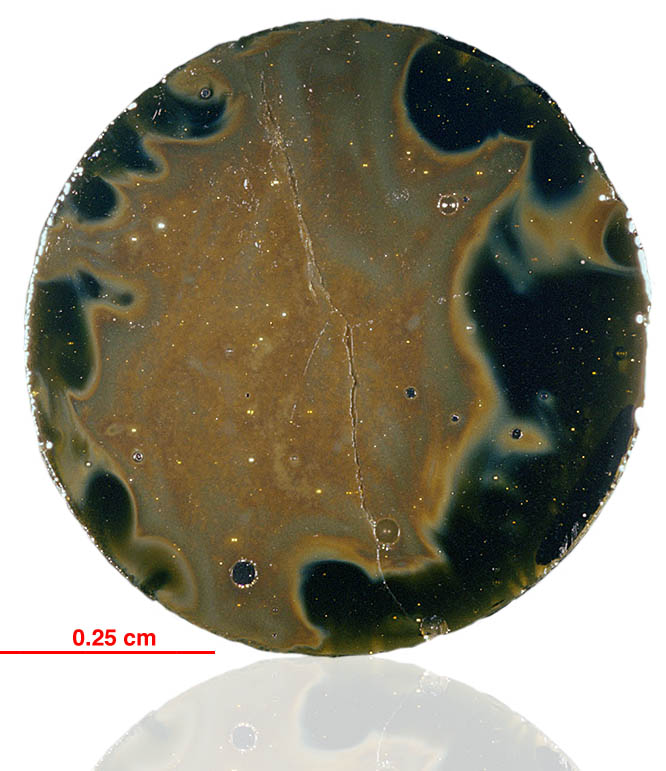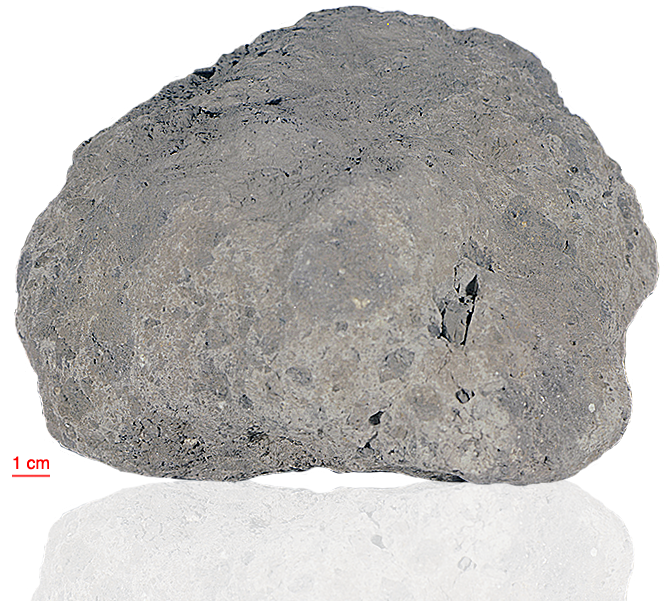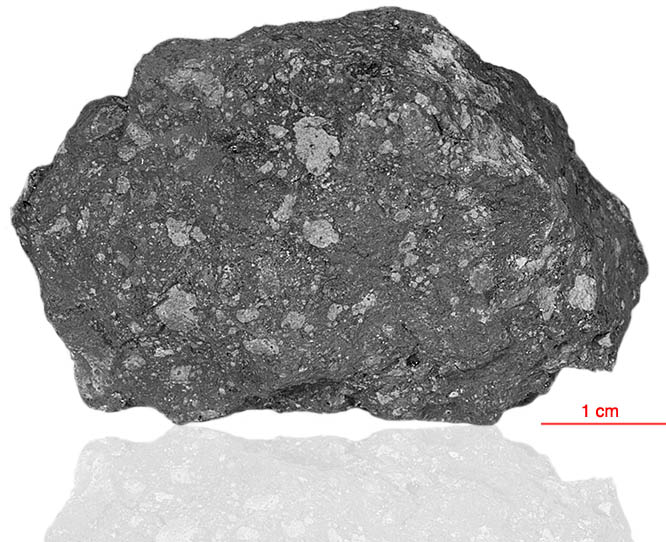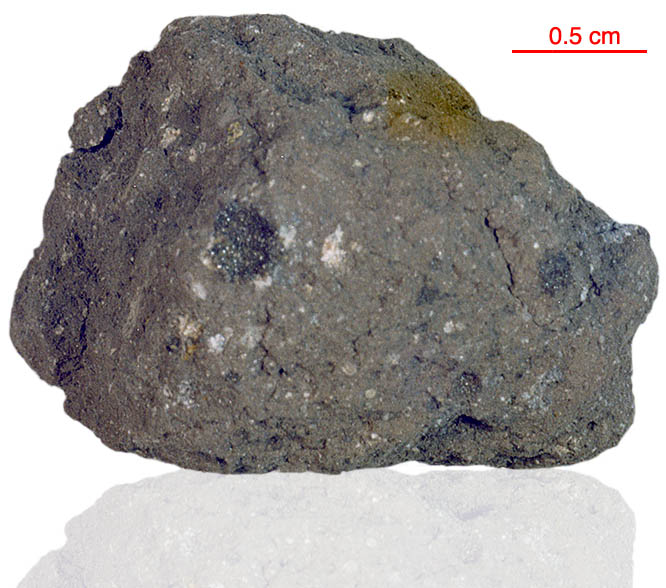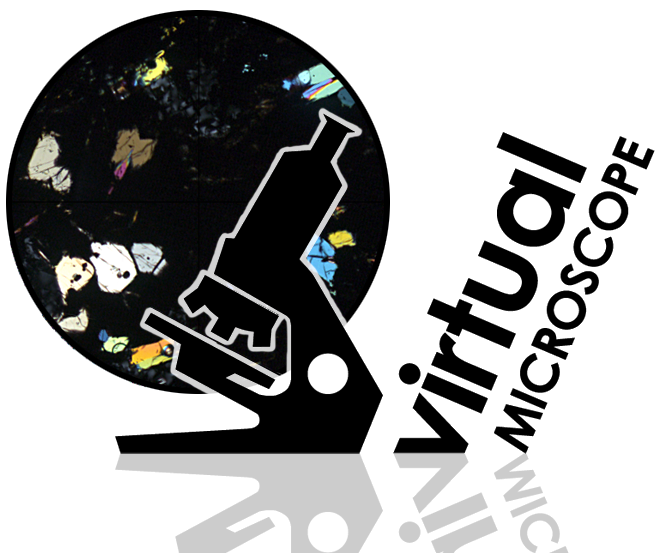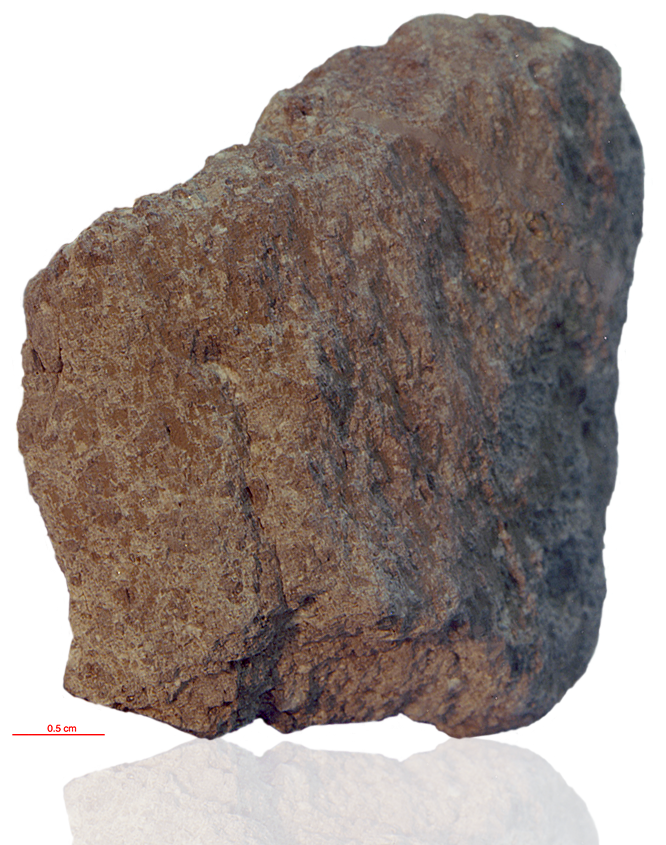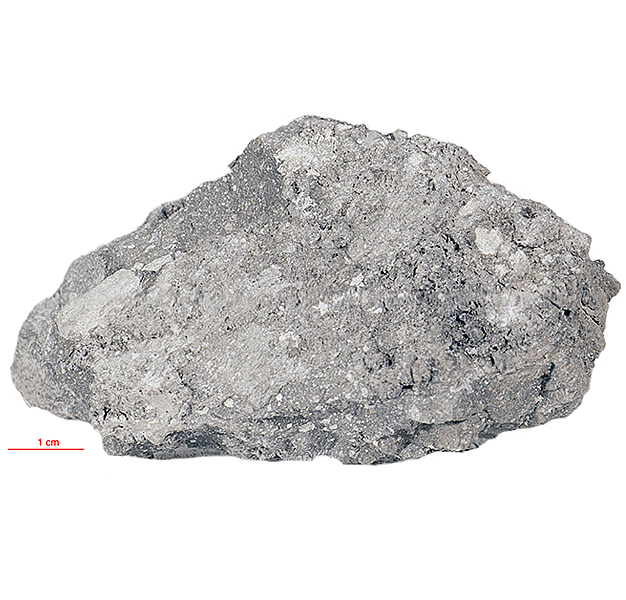
Fact sheet
14307 is a clast-rich regolith breccia with glass spheres and agglutinates in the matrix. It has also been described as a classified as a vitric matrix breccia with abundant clasts. Mare basalt is the dominant lithic component (see rotation 2).
14307 weighed 155 grams before analysis. It has not been dated.
The unusual elliptical feature mainly visible in reflected light is a polishing artifact.
Further details of this and other Apollo samples are here: http://curator.jsc.nasa.gov/lunar/
The Apollo 14 landing site was in a region formed by impact-basin debris.
Most of the 42 kilograms of rocks and soil collected on Apollo 14 are breccias (rocks that are composed of fragments of other, older rocks). In some cases, the rock fragments that form a breccia are themselves breccias. Such rocks obviously have experienced complex histories with multiple generations of impact events. Some breccias were heated enough that some of the material in the rock was melted.
Apollo 14 was launched on 31 January 1971.

